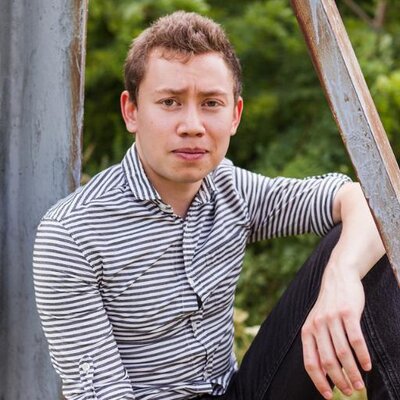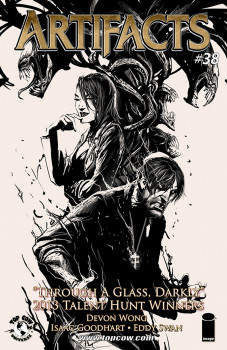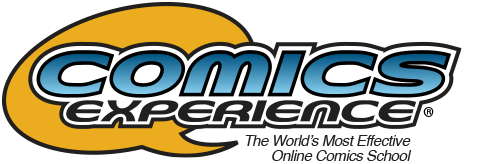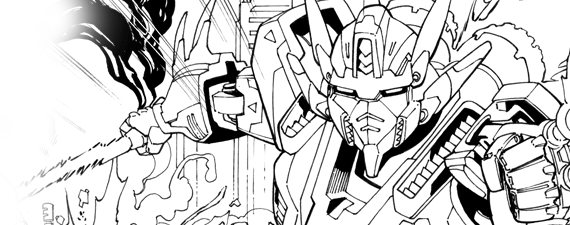Two CE Community Members talk about publishing their winning stories in the Top Cow Talent Hunt!
Kenny Porter was a winning writer in the 2012 competition, followed by Devon Wong in 2013. Now, both writers talk with us about the experience of preparing their submissions, seeing their stories through to the print stage, and what they picked up along the way.
Devon and Kenny are both members of our Creators Workshop, and alums of our writing courses.
Here, Devon shares his take on the publication process. His story, “Through A Glass, Darkly,” is now on sale in Artifacts #38.
Read about Devon’s experience below – and find Kenny’s commentary here in Part 1!
***
 What steps did you go through, from the time you learned of the winning entry through publication?
What steps did you go through, from the time you learned of the winning entry through publication?
Things moved pretty fast. I learned that I was one of the winners and the very same night Top Cow President Matt Hawkins sent me ad copy that would be submitted for the Diamond solicitation, to be sent the next day. I actually found out on my way to a concert on my out-of-date, glitchy smartphone. That was step one: Wrestling with Android’s autocorrect and a glass of bourbon in a mosh pit. I was also told at that point which of the winning illustrators I’d been paired with: Isaac Goodheart.
I immediately Googled Isaac’s Deviant Art page. Then, Isaac sent me a message on Twitter and we had a bit of a social exchange and got to know each other a bit before our formal, professional introduction was made via Top Cow’s editor, Betsy Gonia.
Luckily, Isaac and I got along very well, so we were able to strike up a good dialogue and exchanged reference photos and ideas. This year, the stories were already written, as they were our contest submissions, so I only had to make a few tweaks to the script that week before the green light was given, and Isaac immediately started churning out layouts. He works digitally, so his layouts are also his rough pencils.
We were both brought into the editorial process via email. There was a lot of back-and-forth, especially during the layouts stage. Comments continued well into final inks. All told, the art was done in two months. There was a bit of back-and-forth at the lettering stage. Some small last-minute edits. Troy Peteri did the letters. He’s also the letterer on Kyle Higgins’ C.O.W.L., which was a neat Comics Experience connection [CE founder Andy Schmidt edits C.O.W.L.]. Then, before we knew it, Isaac and I were invited to a folder with a PDF of Eddie Swan’s gorgeous colors, and it was done.
What surprised you about the experience?
It probably shouldn’t have come as a “surprise,” but the level of talent on Isaac’s part. Isaac’s an art machine. I mean… he’s human… but he’s also a machine. He’s a cyborg! You know. The cool kind. Yeah. Let’s go with that.
What were some highlights?
The level of back-and-forth between Isaac and I, and how much fun that process was. We were always in contact, and that was the most rewarding aspect of the experience for me. Even when Betsy was super-busy, we were always keeping each other up-to-date, supporting each other.
What challenges did you encounter, and how did you address them?
I guess the biggest challenge here was coming to this property as a stranger. Most of the entrants were likely already fans. I became a fan through the contest.
There was a lot of research involved in writing the script. I heard about the competition through Comics Experience, on the message boards. I had not previously read The Darkness, or Witchblade, or Artifacts. I was aware of the Top Cow universe, though. Actually, my dad was once in the running to be the storyboard artist for the Witchblade TV show back in the day, when I was just knee-high. But I wasn’t a fan yet. The contest was an opportunity though, and a challenge to write within constraints, so I thought I should make a go of it.
 I read the entirety of Witchblade, The Darkness, and Artifacts over the course of a few weeks. It was daunting, but it happened. I immediately knew that I wanted to write about the Magdalena given the constraints of the competition to write a work of either historical fiction or sci-fi. I had already been toying with the idea of trying my hand at historical fiction. I also knew that I wanted to address colonialism, which Miguel Estacado nodded to in the Black Sails one-shot, and I wanted to expand on the mythology of the Magdalena, which I found fascinating. Once I had the character and the time period selected, I did a bit of research on Mexico at the time.
I read the entirety of Witchblade, The Darkness, and Artifacts over the course of a few weeks. It was daunting, but it happened. I immediately knew that I wanted to write about the Magdalena given the constraints of the competition to write a work of either historical fiction or sci-fi. I had already been toying with the idea of trying my hand at historical fiction. I also knew that I wanted to address colonialism, which Miguel Estacado nodded to in the Black Sails one-shot, and I wanted to expand on the mythology of the Magdalena, which I found fascinating. Once I had the character and the time period selected, I did a bit of research on Mexico at the time.
[To stay consistent with Black Sails], I had to figure out a way of explaining why the Magdalena would be transporting Aztec treasure in the 1670s. This led to research into Aztec myths, and I was immediately taken by Tezcatlipoca. For whatever reason, I had already thought up the idea of using a mirror in the story as a thematically relevant MacGuffin that replicated the Magdalena’s powers, and it just so happened that Tezcatlipoca was connected to obsidian mirrors in Aztec myth, and it also just so happened that the setting I’d already chosen, which I had visited once as a child (it’s a museum now) was built over one of his temples. It was kinda creepy actually, how perfectly everything aligned. Ideas immediately started popping into my head and then I just planted myself at my favourite café for a weekend and wrote.
The writing was the easy part.
What lessons did you take away?
Patience. Top Cow’s a small imprint. They work their asses off, but there’s only so much they can do. Isaac and I found ourselves twiddling our thumbs quite a bit, so we had to learn to just wait for things to happen. So much of comics, I’m learning, is just being patient, not panicking, and waiting for the things that have been set in motion to happen, because there are so many moving parts, and everyone in the industry is overworked.
I also learned a lot from Betsy’s comments on Isaac’s art. Mainly things to look for. I’m not a complete stranger to drawing, art theory, composition, etc., but I had a lot to learn about how to give critiques of sequential art. Still do, and probably always will.
Any advice for those interested in entering the competition in the future?
I can’t really say how the stories were judged, so I don’t think I can tell you how to write a winning story. Instead, I will give more conservative advice about contests, which is to be realistic. As I’m sure most CE members know, as a writer, winning a contest isn’t going to vault you into the industry. It’s just something nice to stick in your portfolio and hopefully to attract future collaborators. I know I still have a lot of work ahead of me, and I’m prepared to continue to pay my dues. This is just a nice bonus and a great experience that taught me a lot. The things you learn by winning, or even just entering, are things you can apply to future projects.
The rewards also come in the form of personal relationships. Meeting Isaac was definitely the biggest prize of this contest for me. Bigger even than seeing the book on the stands. Perspective is everything. You just need to be realistic about what it is you’re really winning.
***
Thanks to Devon and Kenny for sharing their experiences!
Kenny’s story, “The Preacher and the Teacher,” is available in Artifacts #33.
Devon’s story, “Through A Glass, Darkly,” is available in Artifacts #38.
——————————————-
If you want to make comics, write, draw, letter, and color comics, or improve as a comics creator, you’ll find like-minded friends and colleagues in our online workshops and courses. We hope to see you there!
Posted by Nicole Boose
nicole@ComicsExperience.com
Twitter

